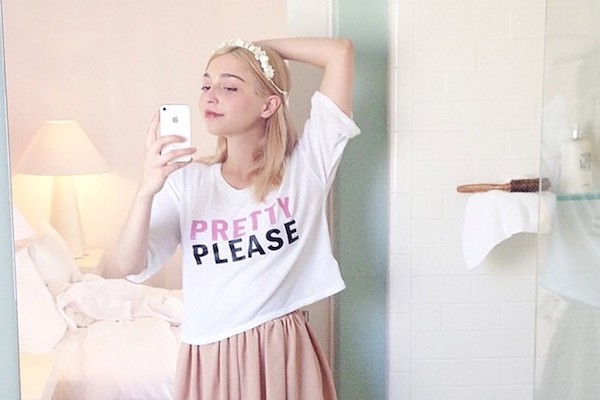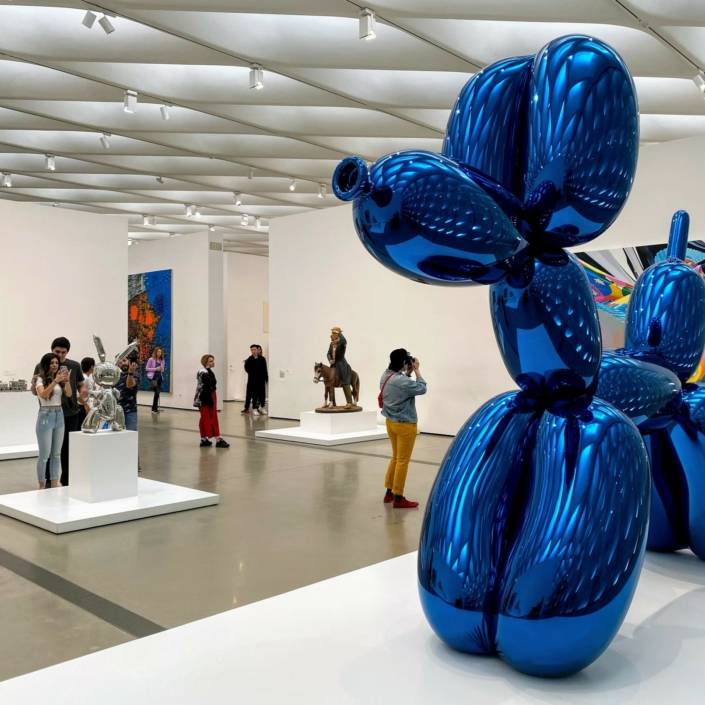Money Sullies Art: Influencer or Master?
There’s a remaining romantic notion of artists that would have them properly shunning self-promotion. But increasingly, artists are turning to social media channels to sell their work, and collectors are getting comfortable with that.
Words: Carrie Miller
Social media has provided the art world and its markets with an unprecedented capacity to engage with new audiences in new ways. The online environment is transforming how art is acquired, with an increasing number of collectors becoming comfortable buying art sight unseen. Museums and galleries have been able to radically extend their reach through digital channels and promote exhibitions and events to people who were not previously engaged in these activities.
At the same time, social media has emerged as a powerful new marketing tool for the public and commercial art sectors, individual artists have begun to utilize these digital plat- forms for self-promotion purposes. This has been met with widespread scepticism, if not disdain, within the traditional art world. The idea that artists would advertise their own work is at fundamental odds with the residually romantic notion of the artist as someone who necessarily abhors the commodification of culture. Maintaining the mystique of the artist as a misunderstood genius requires them to exist beyond the economic reality of our everyday, social existence; it’s a mystique that can therefore quickly evaporate when an artist develops a high-profile online presence.
Some artists on social media manage to avoid criticism by utilising it as a sophisticated, “hands off” way of building their brand, sharing in-situ studio photos and other aspects of their daily life that serve to signify their “authenticity” as an artist. Others are unashamedly direct about their use of social media platforms as marketing channels. These artists may even produce work fit-for-purpose – work made to look good as a digital image – to attract a commercial audience; their social media pages are literally shopfronts with sales capability. Adopting this type of overt corporate marketing strategy is not only seen as crass; it is viewed as a form of vanity publishing that allows people to circumvent critical scrutiny by traditional art experts.
It is convenient for the art world to look down on artists who engage in online self-promotion. The democratising impulses of digital media radically undermine the capacity for traditional art institutions and their experts to gate-keep who is part of the canon – a position of power and influence that has favoured socio-economically privileged, educated, white, urban artists. One of the primary benefits of social media is that it has increased equity and access to an artistic career for people who would otherwise be excluded from one, including those who can’t afford to go to art school or the luxury of time and money that’s required to establish a practice. It doesn’t cost anything to create an online presence, and – in principle at least – anyone with a smart phone can do it. The new professional pathway that social media offers is particularly import- ant for artists who don’t have the type of cultural capital that allows entrée to A-list exhibitions, art fair openings and exclusive dinner parties. This is, of course, the main way an elite group of artists continues to be able to promote themselves to an equally elite group of gallerists, critics and collectors. It is also the case that contemporary art elites know what they are talking about and looking at. Art that translates well on Facebook and Instagram because it is made with the singular purpose of appealing to a commercial market is essentially decorative and shouldn’t be considered serious work deserving of contemplation in the first place.
There is a genre of contemporary art you can find online that does have some conceptual and critical legitimacy: work made by artists who utilise social media platforms in order to create work about the nature of digital media itself.
It is convenient for the art world to look down on artists who engage in online self- promotion. The democratising impulses of digital media radically undermine the capacity for traditional art institutions and their experts to gate-keep who is part of the canon.
In 2014, the artist Amalia Ulman documented her move to Los Angeles on Instagram, posting a series of clichéd images of shopping binges and her breast augmentation. Ulman’s social media feed became a channel for banal insights and aphorisms not typically associated with a creative genius. Her work turned out to be a performance – a feminist critique of online gender representations which intended to demonstrate, as Ulman says, “how easy an audience can be manipulated through the use of mainstream archetypes and characters they’ve seen before”. Ulman’s project to expose the highly constructed nature of “authentic” behaviour documented by “real” people on social media is what really got her noticed as an artist. It’s a contradiction that Andy Warhol, contemporary art’s most acclaimed and shameless self-promoter, would have appreciated.
Photo courtesy: Amalia Ulman, Excellencies & Perfections #2 (detail), 2018. Courtesy: the artist and Arcadia Missa, London.
This article was originally published in Art Collector issue 97, July to September 2021.











